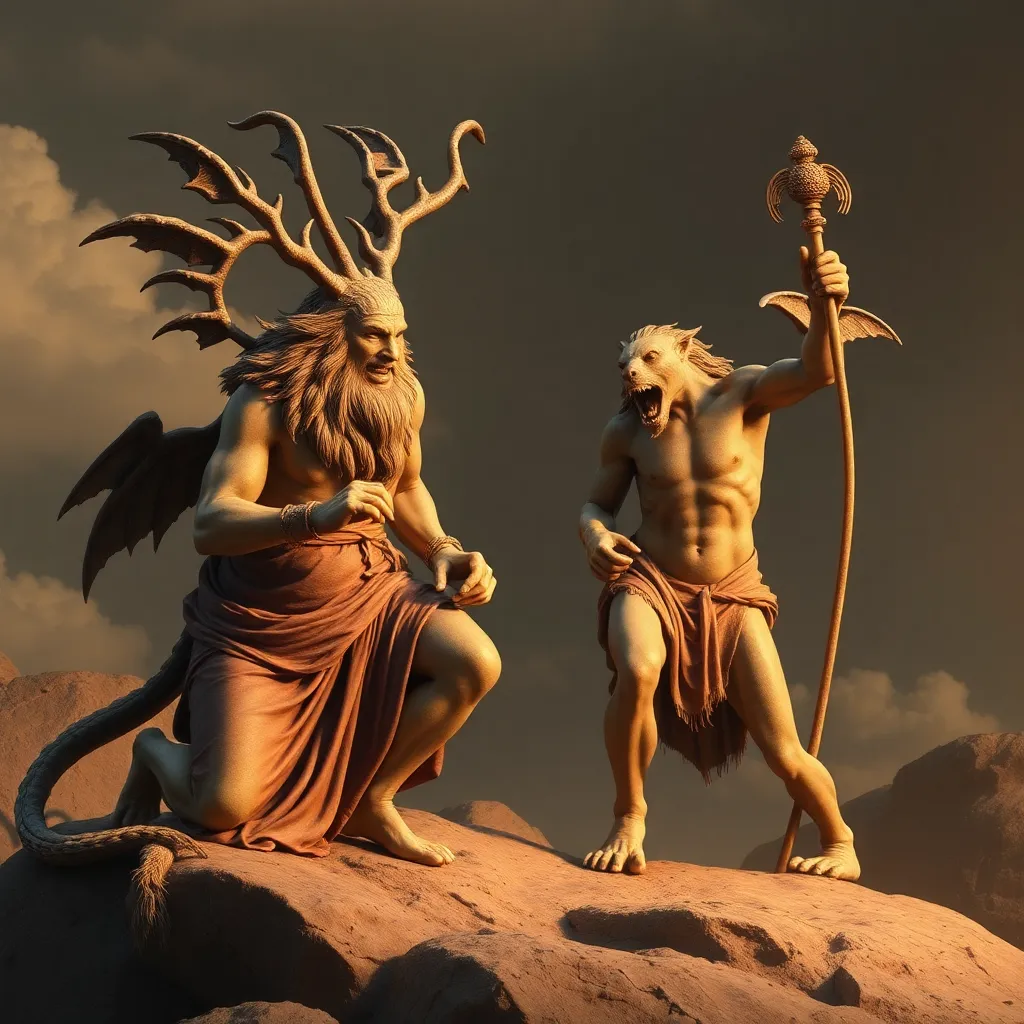The Role of Mythological Creatures in Greek Tragedy and Comedy
I. Introduction
Greek tragedy and comedy are two foundational genres of ancient theatre that have shaped Western literature and performance. Greek tragedy often delves into profound themes of fate, suffering, and the human condition, while comedy frequently employs humor, satire, and social commentary.
Mythological creatures, such as centaurs, satyrs, and sirens, play pivotal roles in these genres, serving as symbolic representations of human emotions, societal issues, and the supernatural. This article explores the significance of these creatures within Greek theatre, examining their roles in both tragedy and comedy.
II. Historical Context of Greek Theatre
The origins of Greek theatre can be traced back to religious festivals honoring the god Dionysus. These festivals featured performances that evolved from simple hymns and dances into complex narratives involving dialogue and character development.
Key playwrights such as Aeschylus, Sophocles, and Euripides revolutionized the genre of tragedy, while Aristophanes and other playwrights advanced the art of comedy. Their works often integrated mythological elements, drawing from a rich tapestry of Greek mythology that was familiar to audiences of the time.
III. Mythological Creatures in Greek Tragedy
In Greek tragedy, mythological creatures often embody themes of vengeance, chaos, and the darker aspects of the human psyche. The Furies, for instance, represent retribution and the inescapability of fate, haunting characters like Orestes in their quest for justice.
Other notable creatures include:
- The Harpies: Winged spirits of storm winds, symbolizing the destructive nature of wrath.
- Medusa: A Gorgon whose gaze turns people to stone, representing the fear of the unknown and the consequences of hubris.
- Chimeras: Fire-breathing monsters that blend different animal forms, symbolizing the chaos that can arise from conflicting desires.
The emotional impact of these creatures is profound, often evoking fear, sympathy, or even horror in audiences. Their tragedies illustrate the consequences of human actions and the often harsh realities of existence.
IV. Mythological Creatures in Greek Comedy
In contrast to tragedy, Greek comedy employs mythological creatures for humor and satire. These beings are often exaggerated and used to critique societal norms, politics, or human behavior. Aristophanes, one of the most renowned comedic playwrights, utilized these figures to entertain and provoke thought.
Key examples from comedic works include:
- Satyrs: Half-human, half-goat beings representing hedonism and revelry, often serving as comic relief.
- Hermes: The messenger god is portrayed with a playful and mischievous nature, embodying cleverness and wit.
- The Cyclops: Used for humorous situations, often to illustrate foolishness or ignorance.
The contrast between serious and comedic portrayals of these mythological beings highlights the flexibility of Greek mythology, allowing for a diverse range of interpretations and narratives.
V. The Intersection of Tragedy and Comedy
Despite their distinct characteristics, the lines between tragedy and comedy blur through the use of mythological figures. Creatures can serve dual purposes, embodying both the tragic consequences of human flaws and the humorous aspects of life.
For instance, the character of Dionysus appears in both tragic and comedic contexts, representing wine, ecstasy, and the duality of human experience. His presence can evoke both reverence and laughter, demonstrating how mythological creatures can traverse genres.
Case studies showcasing this intersection include:
- The Bacchae: A tragedy by Euripides that explores themes of ecstasy and madness, featuring Dionysian elements.
- The Frogs: A comedic play by Aristophanes that features a parody of tragic elements, highlighting the absurdity of artistic endeavors.
VI. Psychological and Philosophical Implications
Mythological creatures in Greek theatre serve as vehicles for exploring human nature and societal issues. They reflect our deepest fears, desires, and moral dilemmas, prompting audiences to confront their own humanity.
Some of the psychological and philosophical implications include:
- Exploration of Identity: Creatures often personify internal struggles, allowing characters to navigate their identities.
- Moral Lessons: The fates of mythological beings often convey moral teachings, warning against hubris or the abuse of power.
- Societal Reflection: Creatures mirror societal values, critiquing contemporary issues through their narratives.
VII. Legacy and Influence on Later Literature and Theatre
The legacy of Greek mythological creatures extends far beyond their original context, influencing Western literature and theatre for centuries. Their archetypal roles continue to resonate in modern storytelling, reflecting timeless human experiences.
Modern adaptations and reinterpretations often draw from these mythological figures, reimagining them in contemporary settings while preserving their core characteristics. Examples include:
- Film adaptations: Movies that reinterpret Greek myths, such as “Clash of the Titans” and “Hercules.”
- Contemporary theatre: Productions that blend ancient myths with modern themes, showcasing their enduring relevance.
VIII. Conclusion
In summary, mythological creatures hold significant importance in Greek theatre, enriching both tragedy and comedy with their symbolic depth and narrative complexity. They encapsulate the dualities of human existence, bridging the gap between joy and sorrow, and serving as reflections of societal values.
As we explore the intersection of mythology and performance in various cultures, we can appreciate the timeless nature of these creatures and their profound impact on art and storytelling throughout history.




